To many seasoned street photographers, the answer to when should street photography be made is simple. At the apogee of an unexpected or anticipated moment full of character, emotion, or interest when gesture or expression meets with a perfect composition and… click.
Of course, to catch those “images à la sauvette“, those “images on the run”, feet has to meet concrete, and not everyone is lucky enough to spend their days in the open air hunting for those moments. How might we make the most of our time? We can choose the most fruitful times to be out there with the camera in our hands
The Rush Hour
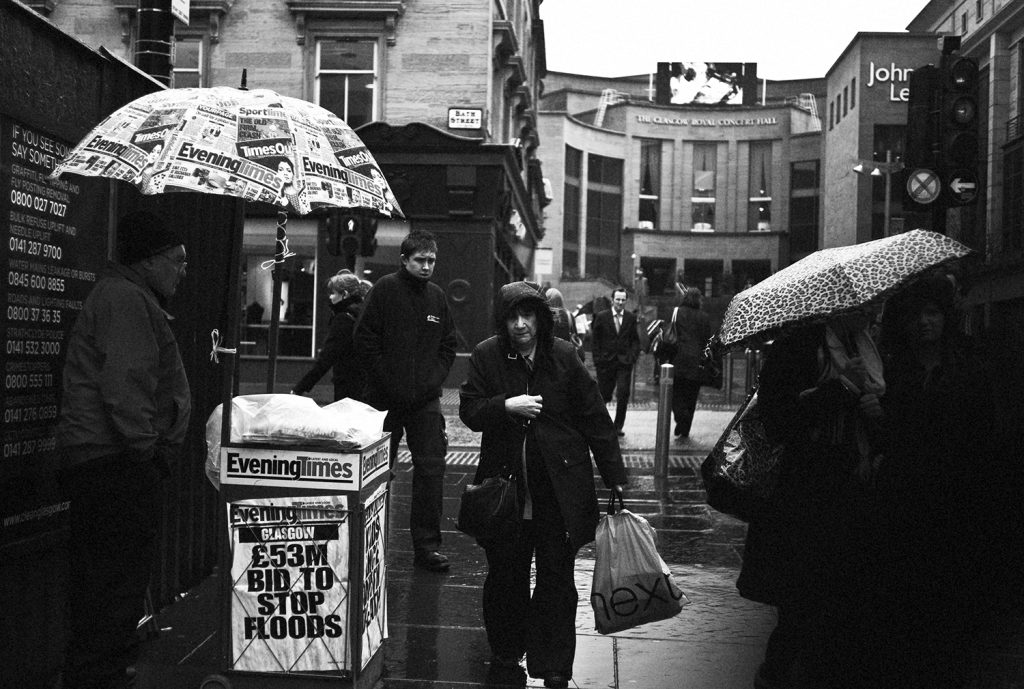
Street photography captures life or the remnants of that life. Towns, cities, even villages have their rhythms, their sinusoidal peaks and troughs. Unless lucky enough to be in the very centre of a tourist hot-spot – or near the universities, hives of activity at any time, 3pm on a Wednesday afternoon, for instance, tends not to offer an abundance of life, at least comparatively so.
Instead, setting out for a morning, lunch-hour, or late afternoon’s photography as people are leaving, or leaving for, work places the camera in the centre of a kinetic, dynamic environment. Subway, bus, and train stations are bustling at these times, and during weekdays, even a city’s high-rise corporate neighbourhood can prove decent hunting ground. As the work day ends, head to the high street. Those on the 9-to-5 will want to spend some of their hard-won gains.
In spring and autumn, as the nights draw in, rush hour meets the magic hour. When the sun sinks to 6 degrees from the horizon, shadows become long and dramatic, and the light scattered by the atmosphere is bathes everything in a golden hue.
The Weekend
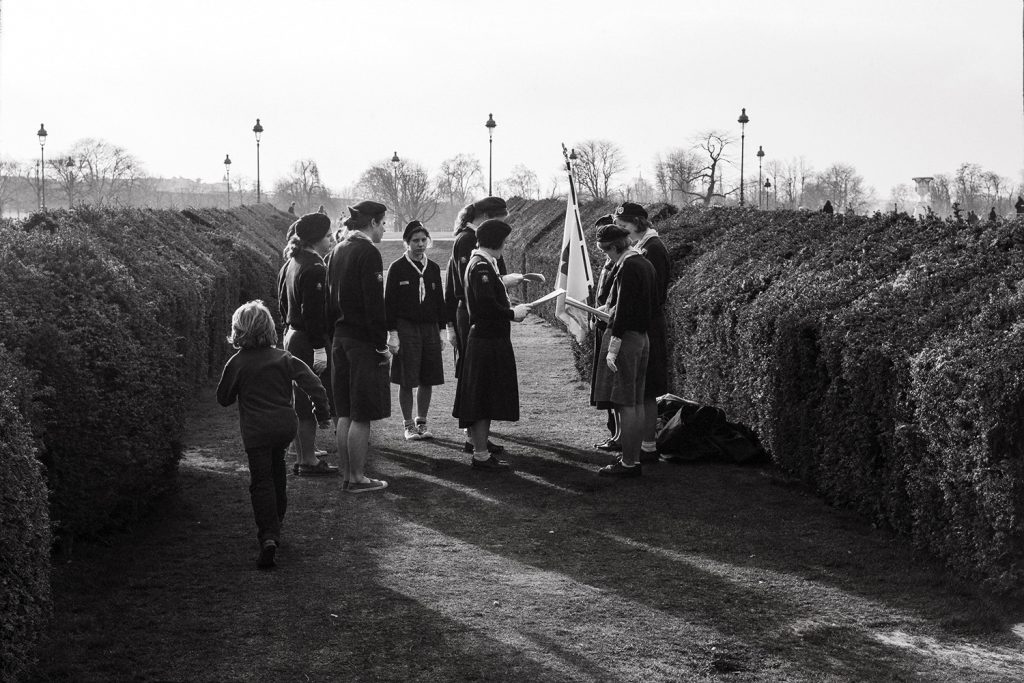
From mid-evening Friday to the early hours of Monday, the weekend provides an entirely different atmosphere. For the weekend, “when” is inextricably linked with “where”
Friday evening is a blessing for street photographers in the entertainment areas of town. Pubs, clubs, cinemas, and the high street are all fertile ground – particularly at “chucking-out” time when youth, drunkenness, and bravado often combine to ignite drama, black comedy or romance.
In the early hours of a Saturday morning find a farmers or flea market, then by lunchtime, the weekend is in full-swing with cities, particularly the tourist areas, pulsing with activity. When Saturday evening arrives, it will not be dissimilar to the night before.
In Warsaw, Poland, where I live, shops are closed on Sundays, so high streets are quiet, however, bars, cafes, museums, and other attractions become hubs of activity, and that’s not even to mention the array of churches attended by throngs of congregants. In good weather, parks are a good option for a lazy Sunday when the churches come out.
Sun Rays and Rainy Days
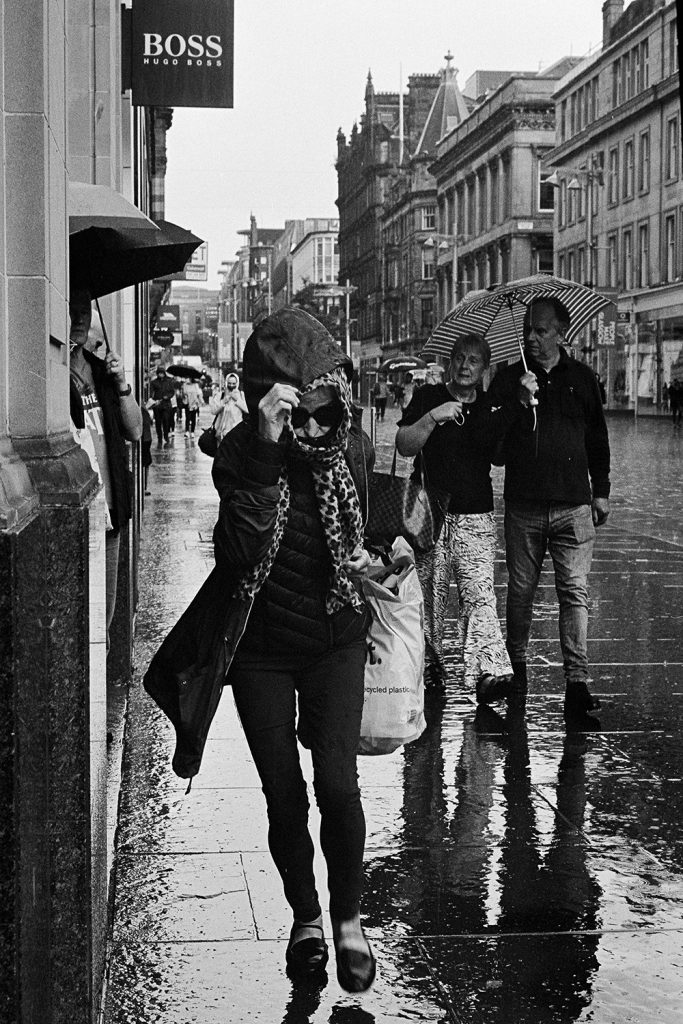
In most cities of the world, when spring turns to summer and the sun appears, so too do the beer gardens, restaurant patios, and outdoor cafe seating. Cities fortunate enough to sit on the banks of a river find the boulevards blossom with much summertime activity. This is a bountiful time for the enterprising street photographer with tourists and locals existing side-by-side and, for the most part, everyone is having fun.
Though not everyone enjoys the rain, the street photographer should embrace it. Umbrellas extended, jackets pulled up over cowering heads, people fleeing towards shelter, children hopping into puddles, the rain offers a treasure-chest of possibility – not least for the misty, moody atmosphere it may bring, or reflections now apparent on the wet ground.
Santa, a rainbow flag or a Teenage Mutant Ninja Turtle?
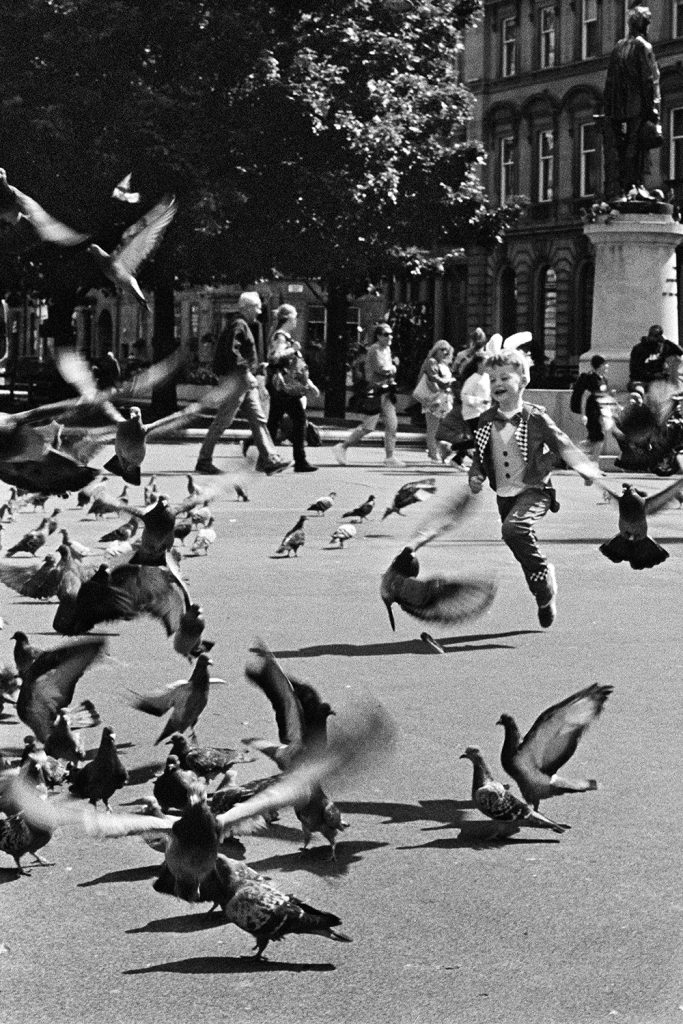
Walking through Glasgow one summer afternoon, camera in hand, there ran past two children dressed in costumes from Alice in Wonderland. Cursing myself for missing it a shot, I carried on, turning the corner to discover two Alices and a Mad Hatter heading into a Costa Coffee (presumably for a cup of tea). “What on earth is going on?” I, not unfairly, asked myself. There was, in fact, a Geo-caching game taking place in the town. Enthusiasts had come from all over the country in fancy dress. They spent their day searching for clues, my plans for the day discarded, I spent it hunting them.
It is good advice to keep a watchful eye on event-listings magazines or websites for advanced notice of festivals, street parties, and parades. These are perfect times to be out on the street with a camera. At Winter Festivals, there may be all manner of elves, reindeer, and Santa. Attending Halloween parades, children costumed as a plethora of cartoon characters, and adults likely dressed as a sexy version of some mundane noun. A particular favourite festival of mine is Warsaw’s annual Pride parade – a joyous celebration of life and love and a great place to catch emotion and expression.
The Revolution Will Be Photographed
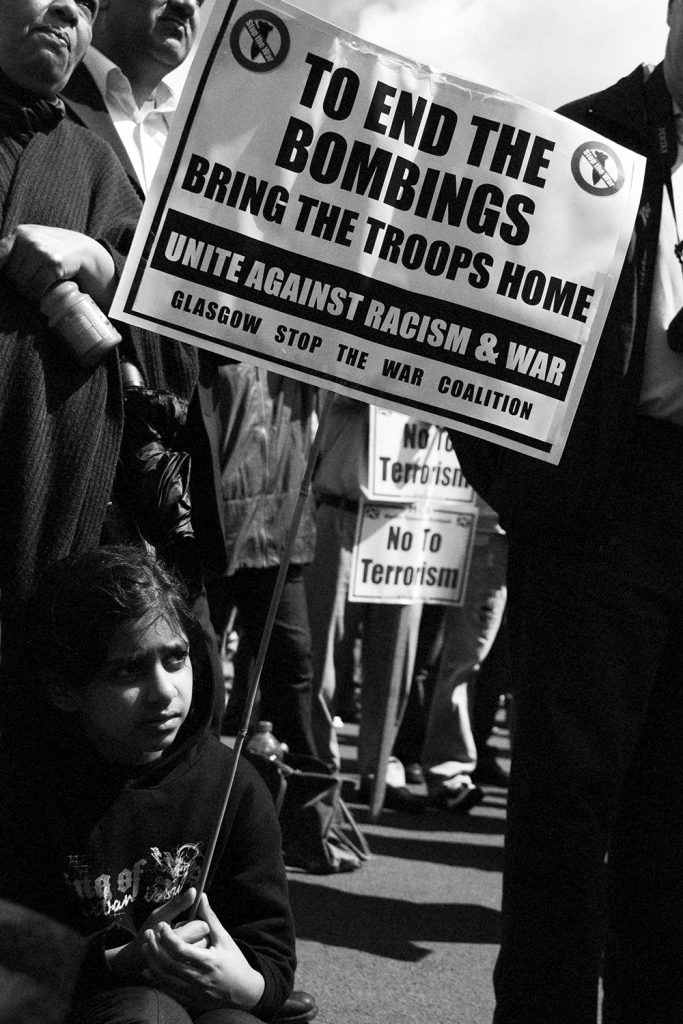
Whether in the turbulence of the civil rights movement of the 60s, the anti-Vietnam war protests of the 70s, the miner’s strikes through the 80s, the anti-hate demonstrations in the 90s, the stop the (Iraq) war protests in the 2000s, or, well, pretty much everything in more recent times, from antifascist to anti-Brexit to abortion rights and more, protests and demonstrations are brim-full of possibility for excellent street photography touching on a documentary style.
In much the same way as street parades and festivals, it is good practice to join online groups, bookmark websites, or scan the local news for notice of upcoming demonstrations. When photographing, even with a partisan eye, it is best to portray a character of neutrality to avoid any negative attention from the protestors or counter-protestors. Of course, the opposite can also be true if you want to attract that attention for more dramatic photography. Some of those protesting, while expecting cameras to be around them, may still take exception to being photographed particularly if, while not breaking any laws, they may be bending them.
So, When To Make Street Photography?
The best advice given to me has been “don’t leave home without your camera”, and as should be as clear as Leica glass by now, the best time to make street photography could be answered by a simple, “any time”, however, that would not have made for the most informative article. Hopefully the suggestions above will help those that, due to other commitments, don’t have time to spend so much time on the street. Get out there. When you can.
This is the 5th part of the 5 Ws of Street Photography where I write about the What, the Why, the Where, the Who, and the When of street photography. You can read the others here.